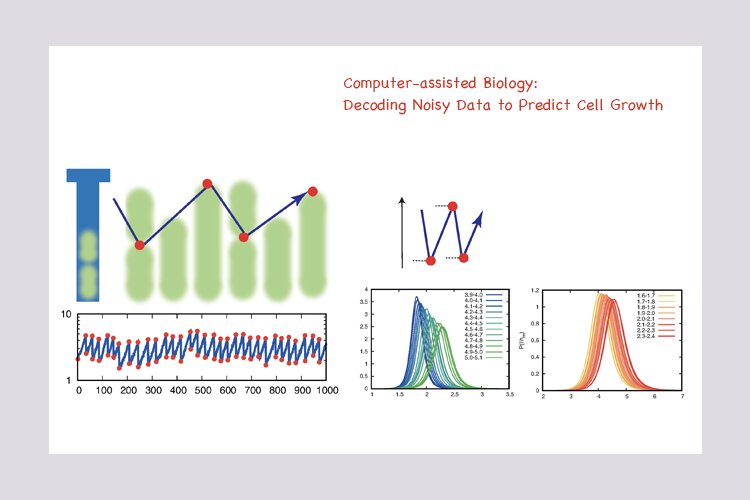Scientists from The University of Tokyo Institute of Industrial Science have designed a machine learning algorithm to predict the size of an individual cell as it grows and divides. By using an artificial neural network that does not impose the assumptions commonly employed in biology, the computer was able to make more complex and accurate forecasts than previously possible. This work may help advance the field of quantitative biology as well as improve the industrial production of medications or fermented products.
As in all of the natural sciences, biology has developed mathematical models to help fit data and make predictions about the future. However, because of the inherent complexities of living systems, many of these equations rely on simplifying assumptions that do not always reflect the actual underlying biological processes. Now, researchers at The University of Tokyo Institute of Industrial Science have implemented a machine learning algorithm that can use the measured size of single cells over time to predict their future size. Because the computer automatically recognizes patterns in the data, it is not constrained like conventional methods.
“In biology, simple models are often used based on their capacity to reproduce the measured data,” first author Atsushi Kamimura says. “However, the models may fail to capture what is really going on because of human preconceptions.”
The data for this latest study were collected from either an Escherichia coli bacterium or a Schizosaccharomyces pombe yeast cell held in a microfluidic channel at various temperatures. The plot of size over time looked like a ‘sawtooth’ as exponential growth was interrupted by division events. Human biologists usually use a ‘sizer’ model, based on the absolute size of the cell, or ‘adder’ model, based on the increase in size since birth, to predict when divisions will occur. The computer algorithm found support for the ‘adder’ principle, but as part of a complex web of biochemical reactions and signaling.
“Our deep-learning neural network can effectively separate the history-dependent deterministic factors from the noise in given data,” senior author Tetsuya Kobayashi says.
This method can be extended to many other aspects of biology besides predicting cell size. In the future, life science may be driven more by objective artificial intelligence than human models. This may lead to more efficient control of microorganisms we use to ferment products and produce drugs.
Learning to help the adaptive immune system
More information:
Atsushi Kamimura et al, Representation and inference of size control laws by neural-network-aided point processes, Physical Review Research (2021). DOI: 10.1103/PhysRevResearch.3.033032
Provided by
University of Tokyo
Citation:
Computer-assisted biology: Decoding noisy data to predict cell growth (2021, July 9)
retrieved 12 July 2021
from https://phys.org/news/2021-07-computer-assisted-biology-decoding-noisy-cell.html
This document is subject to copyright. Apart from any fair dealing for the purpose of private study or research, no
part may be reproduced without the written permission. The content is provided for information purposes only.



